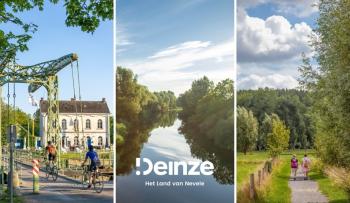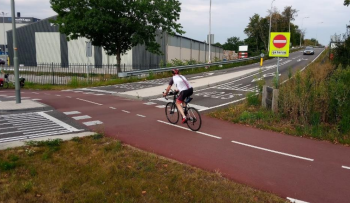
Bike-friendly buildings make for energy-efficient buildings
In the run-up to the revision of the Energy Performance of Buildings Directive, ECF looks at examples of newly constructed and renovated buildings, underlining positives and negatives that demonstrate what future development should strive to achieve.
Electric cars were given centre stage in the 2018 revision of the Energy Performance of Buildings Directive (EPBD). Recent research by the European Cyclists’ Federation (ECF) on the directive’s transposition into national legislation has shown a near unison implementation of the mandated charging infrastructure minimums to car parking throughout the EU member states.
This will undoubtedly boost electric car ownership, as was the case with internal combustion engine (ICE) vehicles, whose omnipresence on our streets was enabled by generous parking minimums [1]. However, if the directives’ weak provisions regarding active mobility remain unchanged, this boost will, unfortunately, come at the expense of more cycling.
Better bicycle facilities means better energy efficiency
Availability and safety of parking near residential buildings are strong drivers of ownership for ICE cars, electric cars and bicycles alike. In fact, studies have shown that the main obstacles to bike usage and ownership are fear of theft (46%) and lack of proper parking (57%) [2]. For non-residential buildings, such as workplaces, those that contain bicycle parking, storage lockers, changing facilities and charging points for e-bikes are found to correlate with a 50% increase in bicycle commuting [3].
Besides encouraging people to drive cars, it has also been shown that the large, asphalted surfaces that automobile parking spaces occupy impede natural water flows and cause negative heat island effects for buildings. Thus, the additional energy usage induced by car-parking spaces amounts to between 0.5% and 12% of the total energy costs during a building’s life cycle [4]. Conversely, the average off-street bicycle parking space and its associated access lanes are up to 20 time smaller than that of a car, offsetting these negative effects on energy efficiency.
Therefore, by giving bicycle parking appropriate attention, the new EPBD revision can be used both as a tool to boost ownership and usage of bicycles and increase the energy efficiency of buildings.
Recognising the benefits
Investors in various European cities have already recognised the benefits of this synergy. Equipping new and renovated buildings with bicycle parking, changing facilities or charging points for e-bikes does not only make the building more bike friendly and energy efficient, it also creates a more desirable place to live and work.
Among our best practice examples are several cases of smart and energy efficient developments that were designed to be completely car free and, instead, chose to provide ample opportunity for bicycle parking.
After all, car parking requirements induce additional expenses onto the landowners, developers and, ultimately, the consumers [5]. Parking accounts for about 10% of the development costs of a typical building [6]. In downtown Amsterdam, the cost of an underground parking garage ranged from €50,000 to €80,000 per space [7].
The 2018 amendments to the EPBD have definitively established a link between the transportation and building sectors as part of the overarching effort of reducing the EU’s greenhouse gas emission. While this does constitute a step in the right direction, there is plenty more room to include cycling as an equal contributor in this effort.
The upcoming EPBD revision is an unmissable opportunity to make buildings throughout the EU truly energy-efficient while also enabling them to get more people cycling.
1. Litman, T. (2021), Parking Requirement Impacts on Housing Affordability, Victoria Transport Policy Institute, Victoria, BC, http://www.vtpi.org/park-hou.pdf 2. Castillo- Manzano, Castro-Nuño, & López-Valpuesta (2015), Analyzing the transition from a public bicycle system to bicycle ownership: A complex relationship, Transportation Research Part D Transport and Environment 38(6) 3. Bueno, Gomez, Peters, and Vassallo (2017), Understanding the effects of transit benefits on employees’ travel behavior: Evidence from the New York-New Jersey region, World Transit Research https://www.worldtransitresearch.info/research/6504/ 4. Mikhail Chester et al 2010 Environ. Res. Lett. 5 034001 5. Jung, O. (2009) “Who Is Really Paying For Your Parking Space ? Estimating The Marginal Implicit Value Of Off-Street Parking Spaces For Condominiums In Central Edmonton , Canada” 6. Litman, T. and E. Doherty (2018), “Parking Costs”, in Transportation Cost and Benefit Analysis II, Victoria Transport Policy Institute, Victoria, BC, http://www.vtpi.org/tca/tca0504.pdf 7. Wentink, Derk. 2009. "The Real Price of Parking Policy: The Effect of Parking Policy on the Housing Market in Amsterdam". Masters dissertation (unpublished). Vrije Universiteit (VU). Amsterdam.
Regions:
Contact the author
Recent news!
Contact Us
Avenue des Arts, 7-8
Postal address: Rue de la Charité, 22
1210 Brussels, Belgium









